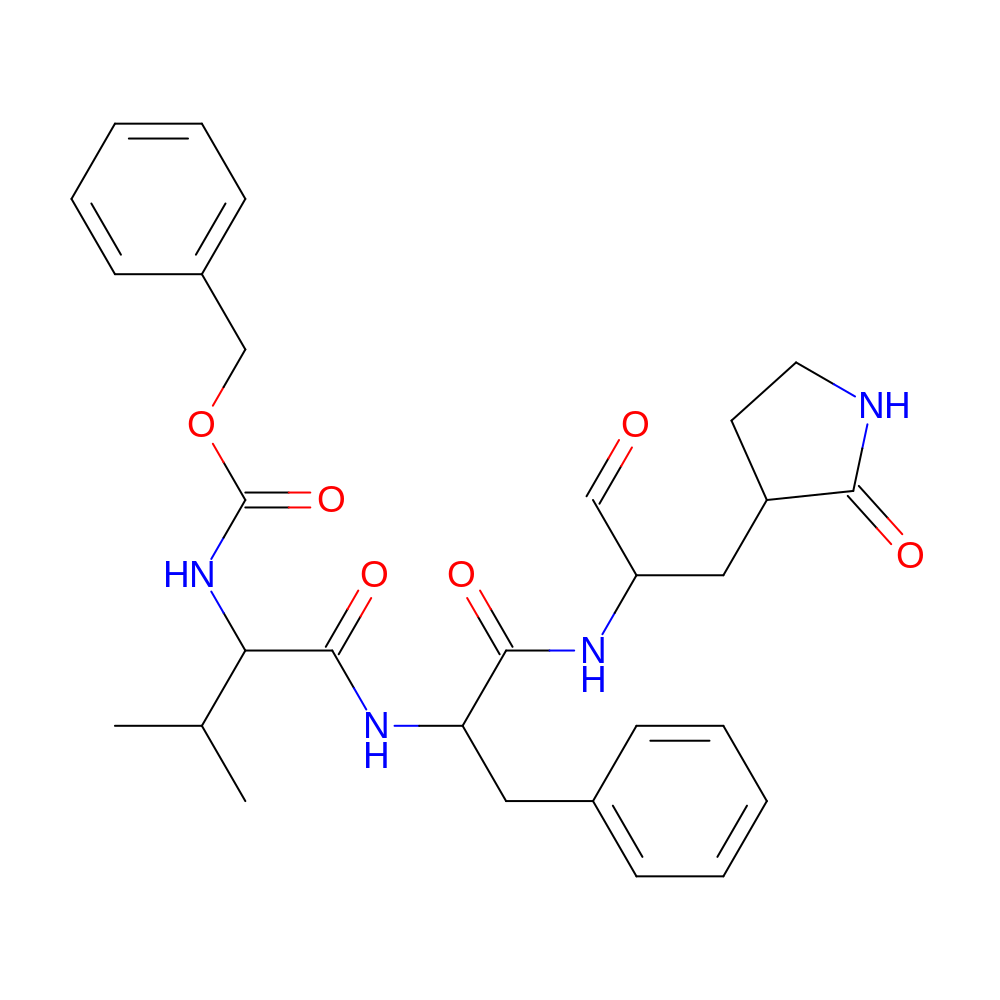7JQ1
Target information
- RCSB PDB
- 7JQ1
- Title
- Structure of the SARS-CoV-2 main protease in complex with inhibitor MPI4
- Method
- X-RAY DIFFRACTION
- Resolution
- 1.65
- Classification
- VIRAL PROTEIN, HYDROLASE/INHIBITOR
- Organism
- Severe acute respiratory syndrome coronavirus 2
- Protein
- Replicase polyprotein 1ab (P0DTD1) Looking for covalent inhibitors of this target ?
- Year
- 2020
- Publication Title
- A Quick Route to Multiple Highly Potent SARS-CoV-2 Main Protease Inhibitors*.
- Abstract
-
The COVID-19 pathogen, SARS-CoV-2, requires its main protease (SC2M Pro ) to digest two of its translated long polypeptides to form a number of mature proteins that are essential for viral replication and pathogenesis. Inhibition of this vital proteolytic process is effective in preventing the virus from replicating in infected cells and therefore provides a potential COVID-19 treatment option. Guided by previous medicinal chemistry studies about SARS-CoV-1 main protease (SC1M Pro ), we have designed and synthesized a series of SC2M Pro inhibitors that contain ??-(S-2-oxopyrrolidin-3-yl)-alaninal (Opal) for the formation of a reversible covalent bond with the SC2M Pro active-site cysteine C145. All inhibitors display high potency with K i values at or below 100?nM. The most potent compound, MPI3, has as a K i value of 8.3?nM. Crystallographic analyses of SC2M Pro bound to seven inhibitors indicated both formation of a covalent bond with C145 and structural rearrangement from the apoenzyme to accommodate the inhibitors. Virus inhibition assays revealed that several inhibitors have high potency in inhibiting the SARS-CoV-2-induced cytopathogenic effect in both Vero E6 and A549/ACE2 cells. Two inhibitors, MPI5 and MPI8, completely prevented the SARS-CoV-2-induced cytopathogenic effect in Vero E6 cells at 2.5-5???M and A549/ACE2 cells at 0.16-0.31???M. Their virus inhibition potency is much higher than that of some existing molecules that are under preclinical and clinical investigations for the treatment of COVID-19. Our study indicates that there is a large chemical space that needs to be explored for the development of SC2M Pro inhibitors with ultra-high antiviral potency.
- External Link
- RCSB PDB
Ligand information
- HET
- VHJ
- Chain ID
- A
- HET Number
- 401
- Molecular Formula
- C29H36N4O6
- Structure
-

- IUPAC Name
- benzyl N-[1-[[1-benzyl-2-[[1-formyl-2-(2-oxopyrrolidin-3-yl)ethyl]amino]-2-oxo-ethyl]carbamoyl]-2-methyl-propyl]carbamate
- InChI
- InChI=1S/C29H36N4O6/c1-19(2)25(33-29(38)39-18-21-11-7-4-8-12-21)28(37)32-24(15-20-9-5-3-6-10-20)27(36)31-23(17-34)16-22-13-14-30-26(22)35/h3-12,17,19,22-25H,13-16,18H2,1-2H3,(H,30,35)(H,31,36)(H,32,37)(H,33,38)
- InChI Key
- WOAWOVDMMGJUQG-UHFFFAOYSA-N
- Canonical SMILES
- CC(C)C(NC(=O)OCc1ccccc1)C(=O)NC(Cc1ccccc1)C(=O)NC(C=O)CC1CCNC1=O
- Bioactivity data
- CI006837
Covalent Binding
- Warhead
- Carbonyl
- Reaction Mechanism
- Nucleophilic Addition
- Residue
- CYS : 145
- Residue Chain
- A
- Interactions
- Pharmacophore Model